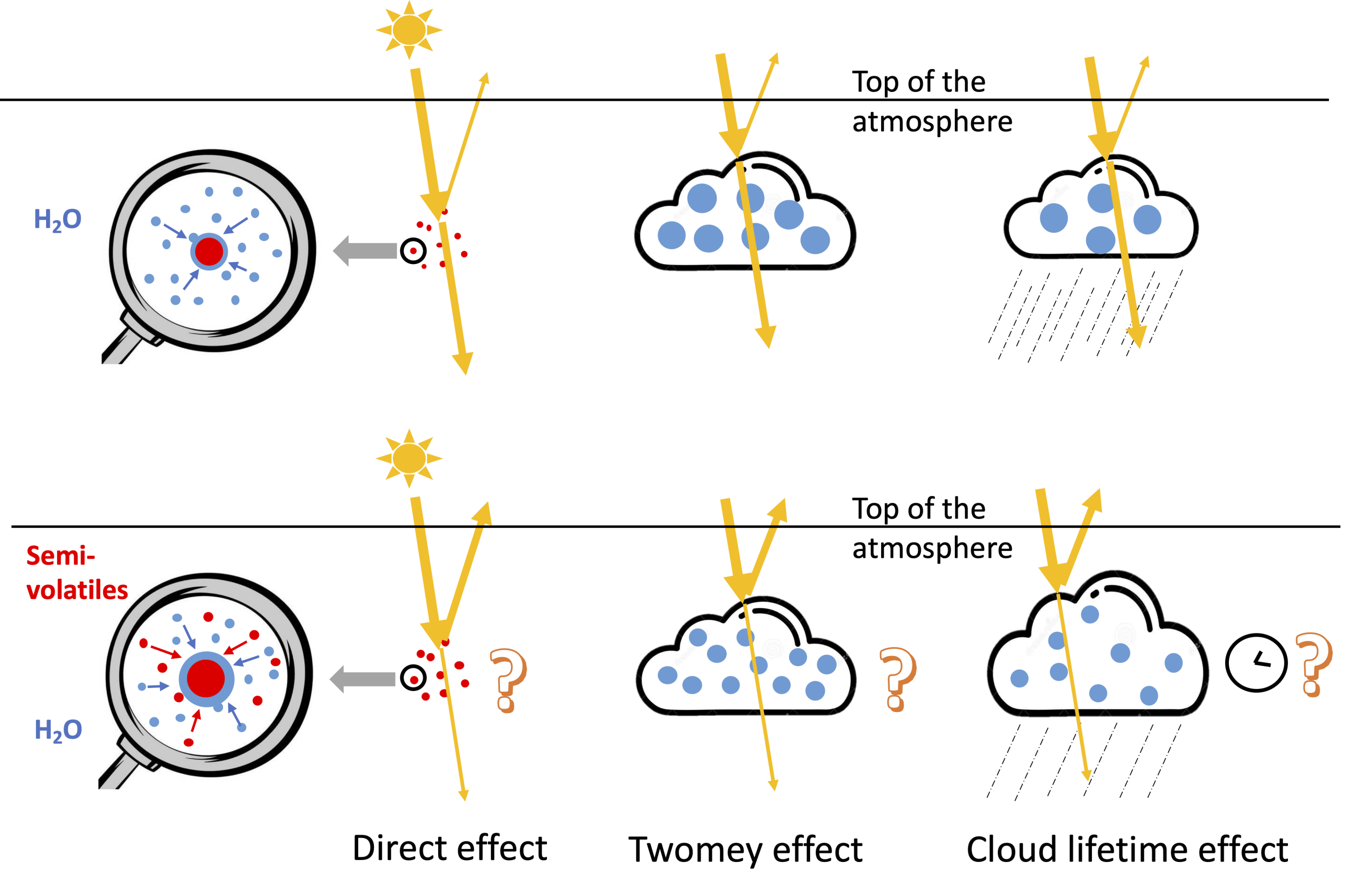Formation of haze and cloud droplets
Significance of semi-volatile compounds on clouds and climate
Semi-volatile compounds are widely observed in the atmosphere globally and usually contribute to over 50% of particulate matter mass worldwide. The co-condensation of semi-volatile compounds and water vapor can facilitate aerosol particle growth and their activation to cloud droplets, which influences cloud formation. This can be important since clouds play a significant role in Earth radiation balance. However, this co-condensation effect is not considered in current General Circulation Models (GCMs), the tools to study climate change. This project therefore aims to understand how much co-condensed semi-volatile vapors (e.g., HNO3, HCl, organic molecules) contribute to aerosol hygroscopic growth in the real atmosphere globally, and how much they can influence cloud formation and climate change. Open-access in-situ observational datasets are combined with a self-developed method and a machine learning algorithm to develop a parameterization to represent the aerosol hygroscopicity enhancement due to the co-condensation effect. This parameterization will be coupled to ICON-HAM and UKESM1 to estimate its impacts on clouds and climate change. The comparison between UKESM1 and ICON-HAM will shed insights on understanding GCMs discrepancies and on directions of further model improvements.
This project is funded by the ETH Fellowship program. For more information, please contact Yu Wang ().

